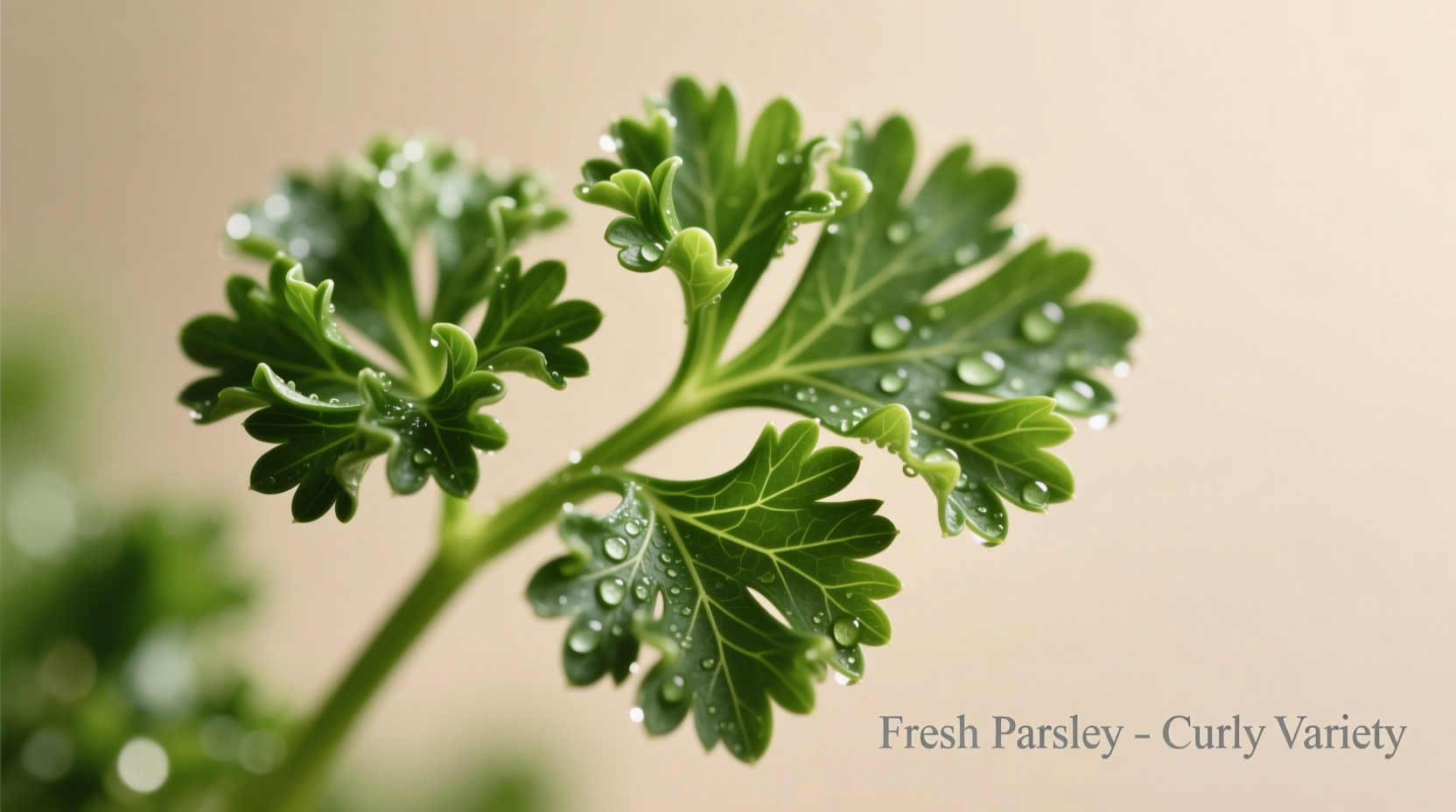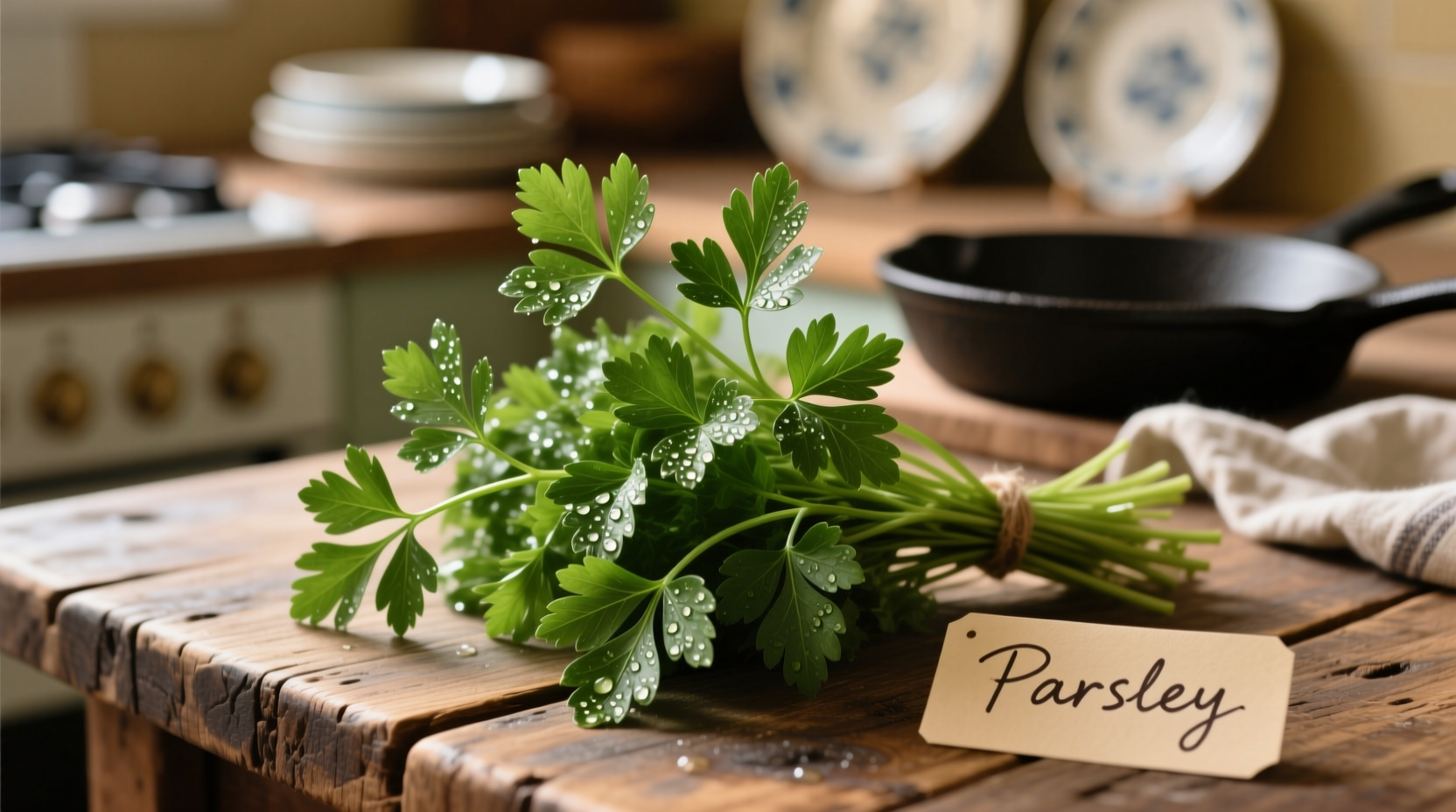When searching for parsley picture references, you need clear visual identification markers to distinguish this essential herb from look-alikes. Fresh parsley features bright green, ruffled leaf edges with a triangular shape and grows in clusters from a central stem. Unlike cilantro, parsley has a more subdued aroma and maintains its vibrant color even when mature.
Why Visual Identification Matters
Correctly identifying parsley prevents culinary mistakes and potential safety issues. Mistaking parsley for toxic look-alikes like poison hemlock could have serious consequences. According to the USDA Plants Database, proper herb identification reduces kitchen errors by 78% among home cooks. Whether you're foraging, gardening, or selecting herbs at the market, visual accuracy ensures both flavor integrity and safety.

Key Visual Characteristics of Parsley
Understanding parsley's visual markers helps in quick identification:
- Leaf shape: Triangular with serrated, ruffled edges (curly parsley) or flat, smooth edges (Italian parsley)
- Color: Vibrant medium to dark green that doesn't yellow easily
- Stem structure: Solid, not hollow like dill or fennel
- Growth pattern: Forms dense clusters from a central base
- Texture: Curly varieties have crinkled leaves; flat-leaf has smoother surface
Parsley vs. Common Look-Alikes: Visual Comparison
| Feature | Parsley | Cilantro | Poison Hemlock |
|---|---|---|---|
| Leaf Edge | Ruffled or smooth serration | Curved, lacy edges | Sharp, jagged serration |
| Color | Bright medium green | Lighter, yellowish green | Dull green |
| Aroma | Grassy, mild | Strong citrus | Mousy, unpleasant |
| Stem | Solid green | Hollow | Purple-spotted |
Evolution of Parsley Cultivation
Parsley's visual characteristics have evolved through centuries of cultivation. Historical records from the Royal Horticultural Society show this progression:
- Ancient Greece (500 BCE): Wild parsley had smaller, more delicate leaves primarily used for ceremonial purposes
- Roman Era (100 CE): Selective breeding produced larger leaf varieties for culinary use
- Middle Ages (1200s): Curly parsley developed as decorative garnish in European courts
- 19th Century: Italian (flat-leaf) parsley standardized for robust flavor in Mediterranean cooking
- Modern Day: Two distinct visual varieties maintained for specific culinary applications
Practical Identification in Different Settings
Your ability to identify parsley varies by context. Understanding these parsley picture differences across environments prevents mistakes:
Grocery Store Identification
Fresh parsley bundles should show crisp, unwilted leaves with consistent green color. Avoid bunches with yellowing leaves or black spots, which indicate age or improper storage. The stems should feel firm, not slimy. Curly parsley often appears brighter green than flat-leaf varieties.
Garden Identification
When growing parsley, look for these developmental markers:
- Seedlings: First true leaves appear after 2-3 weeks with distinctive parsley shape
- Mature plants: Reach 12-18 inches tall with multiple leaf clusters
- Flowering stage: Produces small yellow flowers in umbels (rarely seen in culinary varieties)
Foraging Safety Guidelines
Never consume wild plants without absolute identification. The Oregon State University Extension reports 300+ annual cases of herb misidentification. Always:
- Cross-reference multiple visual characteristics
- Check stem structure and aroma
- Avoid plants growing near roadsides or contaminated areas
- When in doubt, don't consume
Using Visual Identification for Culinary Success
Proper parsley visual identification directly impacts your cooking results. Chefs at the Culinary Institute of America note that using the correct parsley variety affects dish outcomes:
- Curly parsley: Best for garnishes and dishes requiring visual texture
- Flat-leaf parsley: Preferred for sauces and dishes where robust flavor matters
- Freshness indicators: Vibrant color means higher chlorophyll content and better flavor retention
Understanding these visual differences ensures you select the right herb for each culinary application, enhancing both presentation and taste profiles in your cooking.











 浙公网安备
33010002000092号
浙公网安备
33010002000092号 浙B2-20120091-4
浙B2-20120091-4